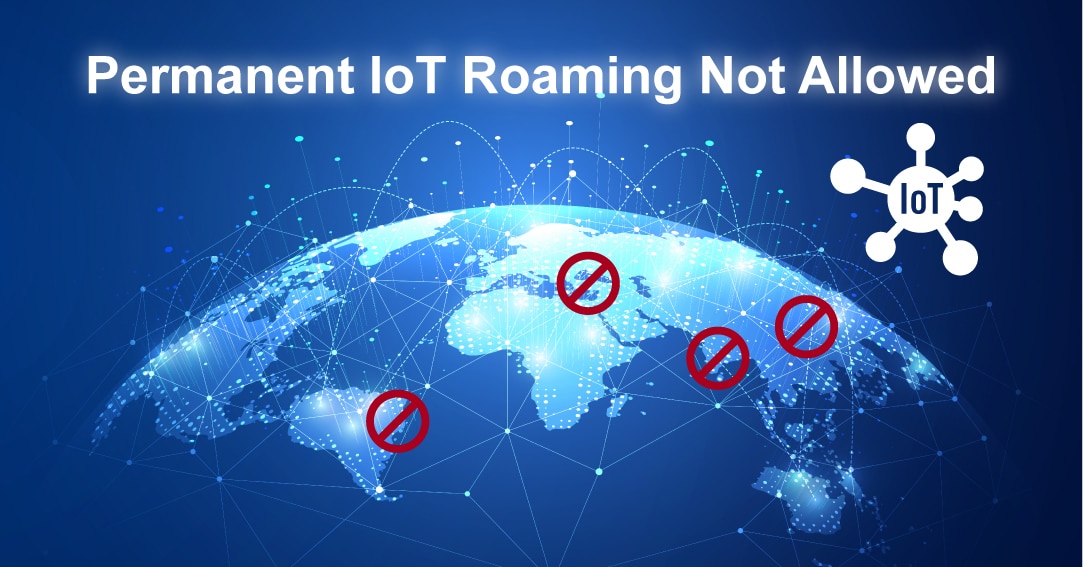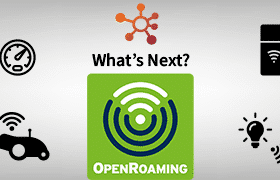Have Your Cake and Eat It too
IoT Without Risk of Roaming Restrictions
In the Enea insights post Unified IoT services over partner Networks, we addressed the importance for cellular IoT connectivity providers to serve customers with a unified global IoT connectivity service. Unified means that the IoT devices will keep the same policies, security settings, and IP address, no matter what network it connects to globally.
In this post, we will discuss how the importance of a global unified IoT connectivity service extends far beyond the ability to deliver a first-class service to customers.
Delivering a unified IoT connectivity service becomes even more critical when eSIMs are used and localized to the visited mobile network. Usually, this means that the mobile operator will lose control over the device to the partner mobile network operator (MNO) if they use their standard mobile core to deliver the service. For example, with the Enea Aptilo IoT Connectivity Service (IoT CCS), a service provider can add their partner MNOs to control the traffic from localized IoT devices and thus deliver a global unified IoT connectivity service to their customers. With IoT CCS, they can provide a global SD-WAN service rather than a private APN.
Rachit Saksena, Head of IoT Product Architecture, TeliaEnea Aptilo IoT CCS provides a federated data network capability across our ecosystem of operators, making it easier for our customers to control policies while adding an extra layer of security.
What if IoT roaming is suddenly not allowed?
Roaming agreements typically facilitate temporary roaming for business travelers or tourists visiting a country, and roaming is also frequently used for IoT.
As addressed in the Enea insight post Global IoT With eSIM Localization, IoT connectivity providers cannot rely on roaming alone to provide global IoT connectivity services for devices staying in a country permanently. Regulators have banned permanent roaming in certain countries, such as Brazil, China, India, and Turkey. Permanent roaming can also be perceived as competition by roaming partners. In recent years, MNOs have increasingly used data analytics to monitor roaming traffic which can lead to surprises, for example, with a large population of permanent roaming devices. MNO partners may want to change the business dynamics to cover for this by creating bilateral revenue-sharing agreements or prohibiting permanent roaming altogether. This has happened in, e.g., the USA and Canada.
IoT devices often need connectivity for more than ten years, which makes it extra troublesome for IoT connectivity providers if roaming is suddenly not allowed. So, let’s investigate some of the consequences.
Consequences when moving from roaming to a local SIM
As an IoT connectivity provider, you may have hundreds of thousands of IoT devices provisioned with roaming enabled with local MNOs in different countries. Just imagine if roaming is suddenly banned in a market for regulatory or commercial reasons.
What to do?
When using traditional SIM cards, the only alternative will be to ask the IoT customers to replace the SIM cards with new local ones, which is practically impossible as IoT devices may be at difficult-to-reach locations worldwide. Traditional IoT SIM cards are also typically soldered on devices and cannot be replaced because they are used in harsh environments prone to high or volatile temperatures and humidity. This challenge will be solved with an eSIM built to provision different MNOs from the start, and service providers can update it over the air (OTA). However, also an eSIM has its challenges in an IoT context. If the OTA localization fails, an IoT device cannot be contacted anymore. Localizing consumer SIM cards is more manageable because if something goes wrong, the consumer will act, for example, by visiting the retail store to fix the connectivity issue.
The next problem shared by traditional SIM cards and eSIMs is if they are localized to a partner MNO. The IoT connectivity service you have worked so hard to create and deliver will no longer be the same, and IoT customers will also lose their central operation and management. Going from a roaming setup to a local SIM will mean customer churn from a policy control point of view, as the traffic will no longer be home-routed by default. The standards indeed stipulate the possibility of routing such traffic home, but it is not much used today.
If you already have a hyperscale programmable layer for cellular IoT connectivity control, security, and automation, such as the IoT CCS, the scenario with a sudden roaming change would not be as dramatic. All you need to do is connect the local MNO partners to IoT CCS like you would connect your own network.
So, while roaming traffic goes through your home packet core to the IoT CCS (MNO One APN), the localized traffic will reach IoT CCS through an identical connection directly from the partner MNO using the same APN name.
Furthermore, as discussed in the Enea insights post Unified IoT services over partner Networks, there are many other advantages to our concept of Multitenancy Private APN.
It is much easier to automate the setup of VPNs without having to create a unique APN for each customer. It is also easier for the Enterprise customer. For example, if the customer needs to change the APN, the IoT device logic with its APN settings does not need to be updated as it would if they had their own unique private APN.
Roaming with local traffic break out
Have Your Cake and Eat It Too
So, to provide customers with a unified global IoT connectivity service – keeping the same policies, security settings, and IP addresses – service providers must have the traffic home-routed either through roaming or adding something like IoT CCS on top of their existing mobile core. But this is in direct contrast to another need that is becoming increasingly important: letting the traffic take the closest route to the destination to minimize latency.
Consider this imaginary example. An international corporation IntCorp rents out large automatic lawn movers to Golf courses. They have an IoT connectivity service through a UK-based service provider called Worldwide IoT. They have provisioned all devices with the operator’s SIM cards, and they use roaming for connectivity worldwide, including Australia. For the IoT devices shipped to Australia, the destination of data for predictive maintenance is always sent to IntCorp’s local office in Perth. Because the roaming is home-routed, the traffic moves halfway through the world, from different locations in Australia to the UK and back to Perth. This adds a latency of several hundreds of milliseconds.
IntCorp now approaches Worldwide IoT with the request to maintain complete central control over the IoT devices’ policy and security while obtaining low latency. They need this because they plan to add functions requiring near real-time connectivity.
What can the IoT connectivity provider do?
They can add regional instances of Enea IoT CCS, localize devices to the local partner MNO and then connect the partner MNO to the closest IoT CCS instance on AWS. As discussed, this is something Worldwide IoT needs in selected markets to deliver IoT connectivity compliant with regulations and commercial agreements that ban permanent roaming.
However, as Worldwide IoT has many partner MNOs, they would like to use standard roaming wherever possible, avoiding connecting every service provider partner to IoT CCS while still delivering a low-latency IoT connectivity service. Simply put, they ‘want to have the cake and eat it too.’
We have listened to this need and are considering adding a standard Packet Gateway for roaming to our IoT CCS service. With this in place, we can provide the tools a service provider needs to deliver an IoT roaming service with low latency. They can use standard roaming mechanisms and send the traffic to the nearest IoT CCS instance, as described in the right part of the picture above.
Welcome to contact us to discuss how Enea Aptilo IoT CCS can bring magic to your cellular IoT connectivity service.




